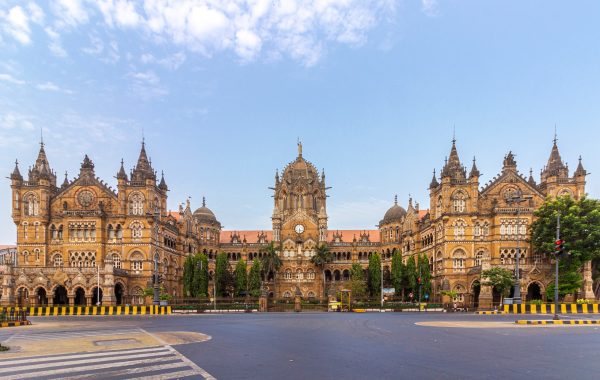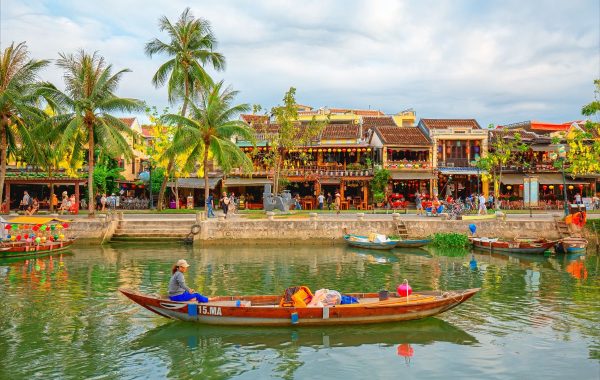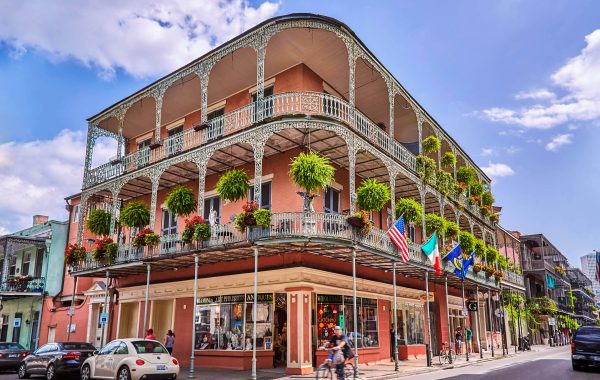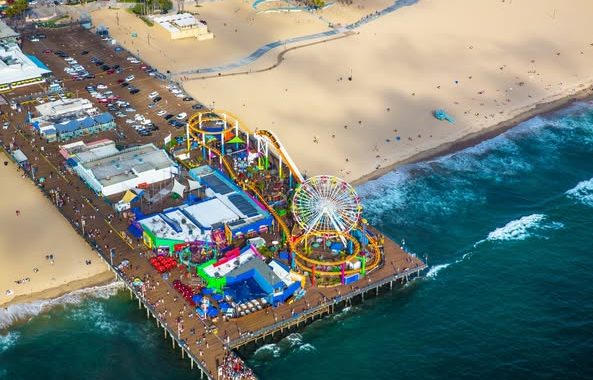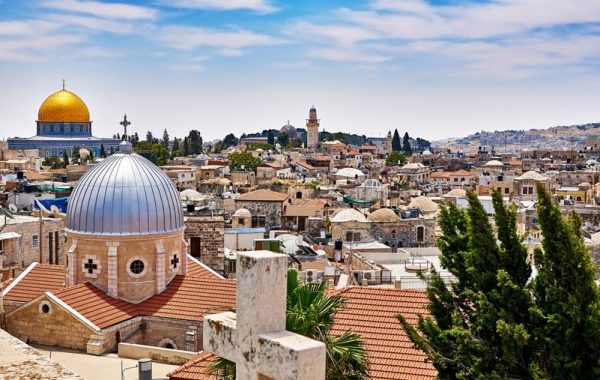Three destinations. Three distinct offerings. This Alpine slice of Europe is steeped in layers of local legend, mountaineering spirit and centuries of alluring art and history.
Chapter 1: Interlaken of Lore
I’ve never shied away from vertigo-inducing heights. Zwei-Seen-Steg, or the Two Lakes Bridge, a cantilevered viewing platform extending from Harder Kulm mountain, on which I position myself at 4,340 feet, is no deterrent. It is where I first greet the Swiss Alps.
From my vantage point, the frosty summits look like upside-down chocolate cones topped with sugar-dusted hulk in the far south—Mönch (13,450 feet) is sandwiched between Eiger (13,026 feet) on the left and Jungfrau (13,638 feet) on the right. Tourists swarm the edge of the bridge’s railing, some armed with selfie sticks and some with hiking gear, all awaiting their turn to photograph the region’s triune icons. Between these three peaks and Harder Kulm rests Interlaken (Latin for “in between lakes”)—an aptly-named town that separates twin turquoise lakes in repose like meditating yogis. To my right lies Lake Thun and to my left, Lake Brienz. The landscape in the middle is brushed with strokes of gradient green upon which Lego-like houses stand. A bird’s-eye view allows me to grasp the sheer magnitude. Star-struck, I search for the right things to say, unwilling to botch a first impression. Ultimately, I let sweet silence fill the air.
“Most mountains in Switzerland are famed for local legends,” my guide, Erika Matte, interrupts my reverie. “You know,” she continues while pointing at the range ahead. “It is said that Mönch (monk) put himself in the centre to keep Jungfrau (virgin) safe from Eiger (ogre).” She then motions to a cluster of houses below in the distance. One of them is her home. Over the next few days, I will learn more about Erika and her hometown: that she has a son she adores and, like most Swiss natives, she loves to go on hikes and worships punctuality. In her youth, she worked with Swiss Air Lines, which came with an opportunity to see the world. Now, even at the age of 75—her hair a shade greyer than the surrounding snow—she has no plans to retire in the near future and finds solace in showing visitors around Interlaken. Her presence helps coax a revelation that rewires my perception of the country and its people; beyond the Bollywood-projected destination for hopeless romantics, I see a land steeped in mysticism, nature and adventure.
***
It isn’t until a guided walk the next morning that I get a true sense of Interlaken. Flurin Lanz—a local from the nearby Thun village, who has made the resort town his home for the last eight years—introduces himself with a fist bump. “Interlaken is not too big, but has remained a favourite since Thomas Cook first included it in his tourism package,” the 28-year-old announces as we navigate roads that intersect at sharp turns. Höheweg, a 700-metre long boulevard lined with souvenir shops and eateries, is surprisingly mellow, unlike the evenings when it is alive and buzzing. Pink, red and purple geraniums spill out of neatly stacked window boxes of homes and hotels. Rust-tinted leaves rustle in the autumnal wind, while the Swiss national flag and a local, ibex-emblem flag, erected at regular intervals, wave at passers-by. I look skywards and witness a flock in motion as hordes of paragliders descend towards a large open ground. It’s only fitting since the region is a hotbed for adventure sports and a base for day-trip excursions.

A bell tolls within earshot and Schloss Interlaken, or the Castle Church of Interlaken, comes into view. “It was the Catholic monks that first developed and controlled the region in the 12th century,” says Flurin, interesting me in the town’s routine history before letting me in on past scandals. The Gothic structure was designed as part of a double monastery complex that housed monks and nuns; although celibacy was a sworn way of life, rules were bent. Today, a popular belief is that in the 14th century a nun gave birth to an illegitimate son and took him to the nearby mountain village of Habkern, abandoning him by a beech tree. Similarly, children born out of wedlock were christened a peculiar last name, Zurbuchen: meaning, ‘brought to the buchen’ or beech tree. This tag was eventually dropped, albeit the surname still lives on.
When the land ownership was transferred to aristocracy, a few hundred years later, clashes often broke out between the villagers and the townspeople. In a bid to foster harmony, Unspunnen Festival was conceived in 1805, and stone throwing, among other competitions, was encouraged in the healthy spirit of unity between the two communities. The week-long jamboree celebrates Swiss traditions and is held once every 12 years, with the next one slated for 2029.

As we make another bend in the road, Flurin amuses me with more local lore. “A young maiden went wood-picking in the forest and realised she was being followed by an evil monk,” he points north up at Harder Kulm. “Paranoid, she ran for her life and the monk chased after her until she fell off the cliff to her death. So, God doomed the monk and turned him into a rock from where he was compelled to look down at the murder site for the rest of eternity.” Upon closer inspection, I notice what seems to be the form of a triangular face on the stony surface. Turns out, the Almighty’s wrath has also long doubled as a cardinal compass, visible from anywhere in the neighbourhood. The monk is Interlaken’s North Star, I joke.
The hour-and-a-half-long stroll comes to a close in the nearby village of Unterseen (meaning, “below the lakes”). The sun pierces through the clouds and I seek refuge under a tree that overlooks the Aare river. Ducks splash around in the turquoise water that gets its beautiful colour from a glacier. “Extending 288 kilometres, it is the longest flowing river entirely within Switzerland, and meets the Rhine in Germany,” Flurin tells me. I’m half-tempted to take a dip. “You can even jump in for a swim if you can handle the cold,” he reads my mind. I regret not bringing a change of clothes.
So, I turn to a local café for comfort, where I polish off a plate of rösti—a traditional pancake of fried, grated potatoes topped with a fried egg, bacon and cheese—and wash it down with a bottle of the fizzy Rivella, a soft drink produced from milk whey. My appetite for food is satiated, but my hunger for the next quest has just been ignited.
***
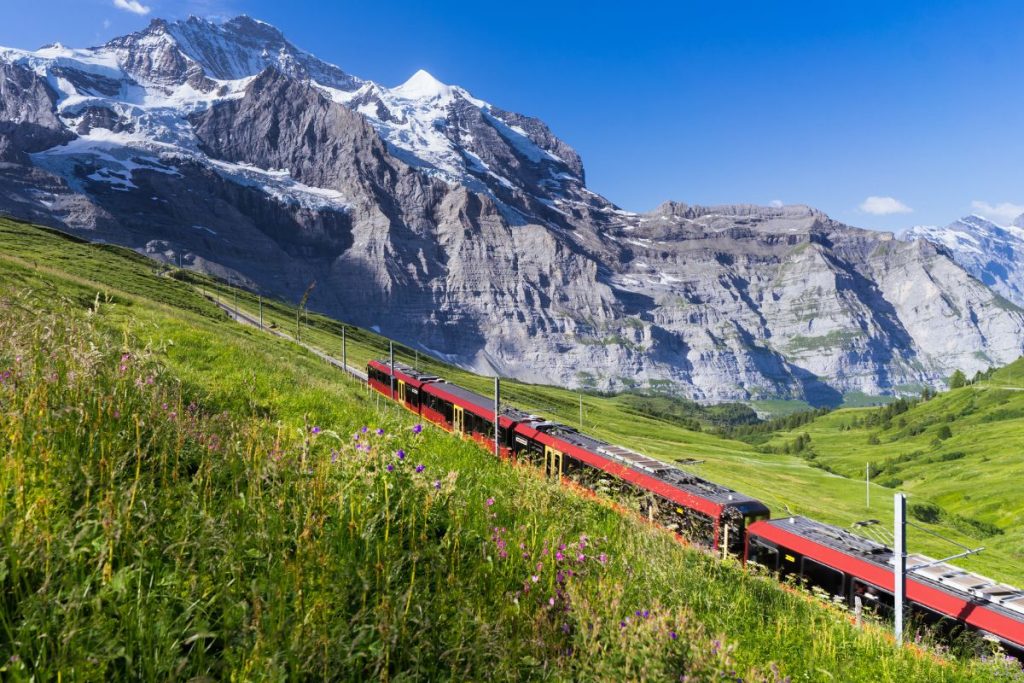
At first glance, Jungfraujoch, Europe’s highest railway station at 11,330 feet, looks like a giant tub of vanilla ice cream—as brain-freezingly cold and blindingly white as a portal to the Ice Age. As far as my eyes can see, Alpine mountains jut from never-ending swathes of snow. This area is known as The Saddle, which connects Jungfrau and Mönch, two major 4,000-ers (metres) of the Bernese Alps. The wind howls at -7 °Celsius and I shudder underneath four layers of clothes. The only movements I notice on nature’s canvas are that of the yellow-billed chough, which flutter effortlessly even at such a high altitude, and of a group of mountaineers, who shrink to the size of ants as they attempt to cross the 22-kilometre long Aletsch Glacier—Europe’s longest, and a UNESCO World Natural Heritage site.
“It took some 3,000 workers 16 years to complete the electrically operated cog railway before its launch on August 1, 1912,” proffers Erika, with whom I’m reunited. The masterpiece was the brainchild of one Adolf Guyer-Zeller, a Swiss industrial magnate, who unfortunately succumbed to pneumonia a few years before the fruition of the project. A century into the future, his legacy is immortalised as an engineering marvel, slicing tunnels through the heart of Eiger. Pit stops along the way make for astounding viewpoints of pastoral villages and meadows.
I take my time to navigate every nook and corner of the station: the snow globe-like Ice Palace, the main complex with restaurants and shops, and the observatory decks, Sphinx and Plateau, from which Interlaken, and with some luck, Germany’s Black Forest are visible on a clear day. The clouds prove to be a dampener and obstruct my field of vision. I save an encounter with the neighbouring nation for another time. Interlaken keeps me humble.
Chapter 2: Zermatt’s Mountain Zeal
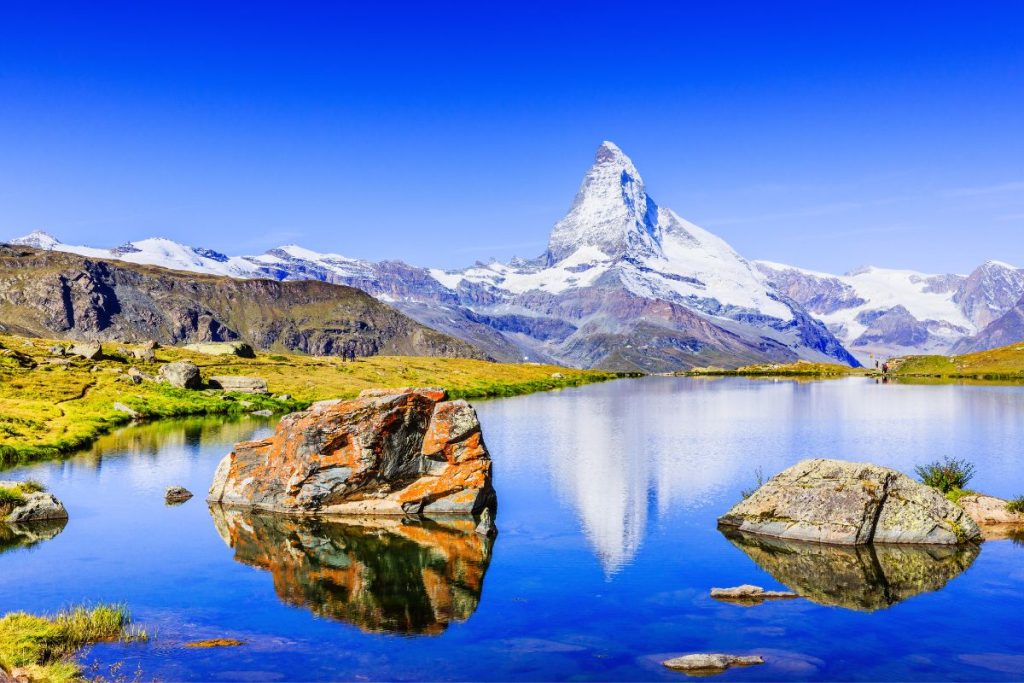
Zermatt’s charm lies in its idyllic setting. The car-free resort town is replete with centuries-old chalets and pine trees that cloak the landscape, whilst its streets are lined with opulent watch shops and bakeries that dish out delicious treats. None of this, however, prepares me for the mountaineering spirit that mantles the region. At 14,692 feet, the Matterhorn is omnipresent— difficult to miss and its magnetism hard to resist.
Almost every eatery (left) in the country serves cheese fondue (bottom right), a traditional Swiss favourite; The imposing Matterhorn (top right) reflects in the Stellisee’s mirror-like surface; Photos by: emperorcosar/shutterstock (landscape), Roman Babakin/shutterstock (Restaurant), Photo Courtesy: Switzerland Tourism (cheese fondue)
I arrive on a rainy afternoon. The overcast sky nearly dashes my hope of a rendezvous with the local celebrity I have thus far only seen on Toblerone’s packaging. But the lack of an agenda on the day’s itinerary leads me to the Gornergrat Bahn. I hop aboard the train that swirls along the mountain track and whisks me to the summit of the Gornergrat at 10,135 feet. The landscape flickers from a countryside setting to a charcoal painting of black-and-white peaks in 33 minutes, as ibex begin to make appearances. Behind a thick veil of fog, the epic glacial ‘horn’ plays peekaboo.
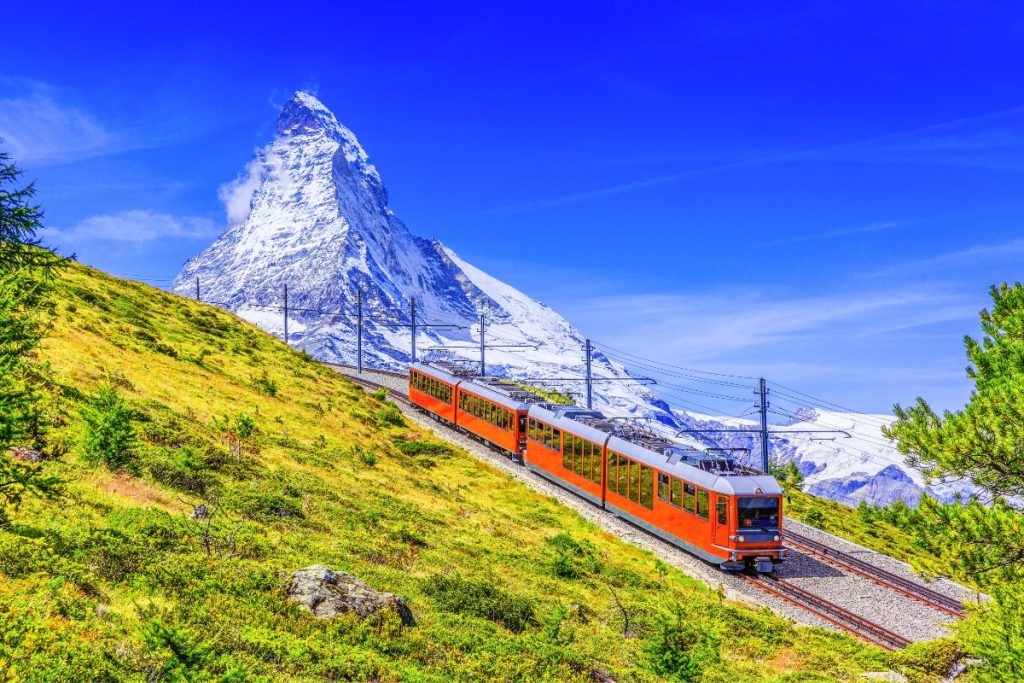
In Switzerland, children learn to hike and ski as soon as they learn to walk,” Mirjam Jost, a Zurich native and an employee at Switzerland Tourism states matter-of-factly. I’m not surprised. If my backyard in Mumbai rolled up to nature, I’m certain I’d have basked in the outdoors more frequently. This explains why it is common to see toddlers as young as three embark upon trails, just as it is normal to see the elderly scale steep elevations with the finesse of a local blacknose sheep.
A short ride aboard the funicular to Sunnegga and a gondola to Blauherd from the town’s centre brings me to the starting point of my trail. For a population that loves to walk, they’ve sure aced the department of connectivity and transport. Mirjam hands me a chocolate box “survival kit” and we set out on what was promised to be a 15-minute route. Swiss time ticks at a much faster pace than its Indian counterpart, but I don’t complain.
The next two hours are spent navigating the juniper-studded expanse that afford views of the Matterhorn and gorges cut so deep that even Tarzan couldn’t swing between them. Soon, we stumble upon the coveted Stellisee. At 8,323 feet, the placid lake’s mirror-like surface spits out a photocopy of an inverted Matterhorn. The scenery is straight out of desktop wallpaper: too good to be real. I park myself on a nearby rock and sit in awe of the view until it’s time to move to the next stop—lunch at 8,550 feet.

The server brings over plates of raclette, spaghetti and chèvre salad at the red-windowed Fluhalp restaurant run by an Italian family. “Merci!” Marjam mouths. Albeit a predominantly Swiss German-speaking region, gratitude rolls off the tongue in French. I quiz her about local dialects and she tells me about the country’s four national languages: Swiss German, Swiss French, Swiss Italian and Romansh.
While the first three are practised in cantons that border the respective neighbouring countries, the latter, a melange of dialects descended from colloquial Latin, is spoken in several regions in the canton of Graubünden.
“You must visit again in winter, when Zermatt turns into a skiing hotspot,” Marjam extends another invitation.
***

Zermatt, in the canton of Valais, is a sparsely populated town with not more than 5,500 residents. Owing to its natural environs, sustainability is at the core of its planning. Most houses function on thermal electricity. Only e-vehicles and buggies with special permits are allowed to ply its streets, where horse carriages of yore once roamed. Evidently, the surroundings are quiet, except for the warbling of the Vispa river that blazes through the town’s centre.
“Zermatt was originally home to farmers and herdsmen, and was called Prato Borni (Latin for, ‘meadow near spring’) in 1280,” Angela Moser, our guide, addresses my group of women-only Indian journalists. We proceed to walk around the town, peeling back layers of its history in the cobbled lanes. It became the subject of fascination when a group of British mountaineers, including the famous Edward Whymper, first scaled the Matterhorn in 1865. The descent ended in tragedy as only three of the seven members returned, stirring investigation and much controversy. It was later revealed that the fault lay in the poor quality rope, which snapped in half, untethering the four who met with death. Six years after the accident, Lucy Walker became the first woman to triumphantly scale the same mountain, wearing a skirt no less. The entire history is documented at the Matterhorn Museum—Zermatlantis, which is designed to look like an unearthed excavation site, bridging the past and the present.
The nearby Parish Church of St. Mauritius, with its washed out stone facade and pistachio green roof, is fixed on Bahnhofstrasse. “Back in the day, people disagreed about its location,” Angela begins, and I sense a tale of dispute. “Those in favour of the current site moved the materials overnight from its former place of safekeeping. When the townsmen woke up the following morning to find the components relocated, they attributed it to the will of God and proceeded to construct the church where it currently stands.” Faith is a funny thing with power.
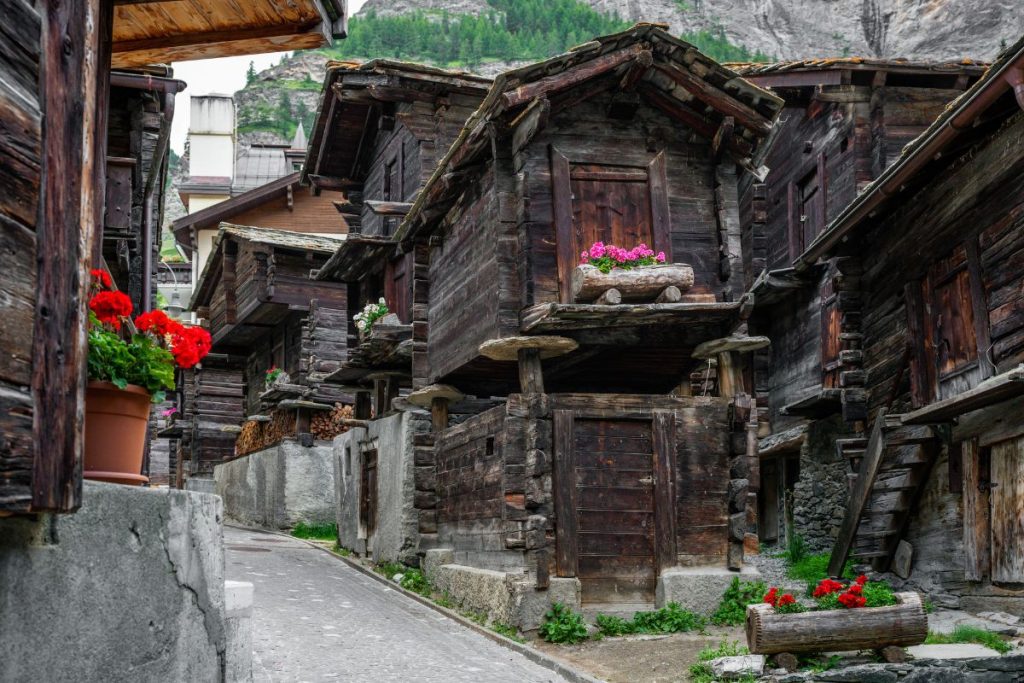
Behind the church rests the Mountaineers’ Cemetery, where we stop to pay our respect to those who lost their lives during mountain expeditions. “Grave of the Unknown Climber,” reads an epitaph at the end. The tombstone is dedicated to those whose bodies were never recovered. For heroes, there is dignity in the afterlife too.
We make our way to the fabled setting of Hinterdorf—Zermatt’s oldest quarter. Dark-tinted chalets, dating between the 15th and the 19th centuries, are huddled close together. Their proximity eased the trouble of scooping out blockages of snow in winters. “The structures are built of larch wood and slate roofs, and no nails are hammered to hold them together,” Angela gestures at the neighbourhood.
Livestock were kept on the ground floor, while families occupied the upper floors where they also built a storage unit for food. A barn was usually shared between multiple houses. Interestingly, the small doors suggest the people of the region used to be shorter. The protected zone disallows any form of modification. Not many occupants are left today. “Where are you ladies from?” a voice echoes from above. We crane our necks to see a woman in a scarlet coat. “I’m Antoinette,” she smiles and waves excitedly from her balcony. Over a brief conversation, we discover that her family home, where she has lived all her life, is 200 years old. A fellow journalist asks for her permission to take a photograph. “I’m too old to pose,” she protests, but gives in with a little cajoling before we part ways.
The street leads down to a memorial fountain dedicated to Ulrich Inderbinen—the world’s oldest mountain guide—who undertook 370 ascents of the Matterhorn over a course of seven decades, the last one on his 100th birthday. He died three years later in 2004. “If you drink from here, it is said that you’ll live to be a hundred too.” We take Angela’s word and cup a handful of the fountain water into our mouths. It tastes of hope.
Chapter 3: From Lucerne with Love

“Lucerne’s tradition of classical music can be traced back to 1938, predating World War II,” Sabine, a local guide, commences the tour of one of Switzerland’s most cultural cities. We’re overlooking the shore of Lake Lucerne outside KKL, also known as Culture and Convention Centre Lucerne, which has played host to notable pianists and orchestra maestros from the world over. The edifice’s glass box-like facade—designed by French architect Jean Nouvel—is cutting-edge and futuristic, making it the object of international envy since 2000. The main Concert Hall on the east wing of the complex can host up to 1,840 guests and its acoustics are hair-raising; Sabine mimics feeling the goose bumps. The structure’s cantilever roof is suspended with no support, 45 metres diagonally and is equipped with 2,000 aluminium panels on the underside that are heated to melt away snow in the winters.
The “Lion of Lucerne” (top) commemorates the Swiss guards who were massacred in Paris during the French Revolution in 1792; The 1677-inaugurated Jesuit Church (bottom) was the first of its kind in the country to be built in the baroque style. Photo by: saiko3p/shutterstock (church), Photo Courtesy: Lucerne Tourism (lion monument)
Somewhere in the distance, a symphony pours out of a busker’s alphorn. I’m unfamiliar with the instrument and the tune, much like the city’s quarters I’m yet to discover. But the longer I stick around, the more enriching the experience gets.
***
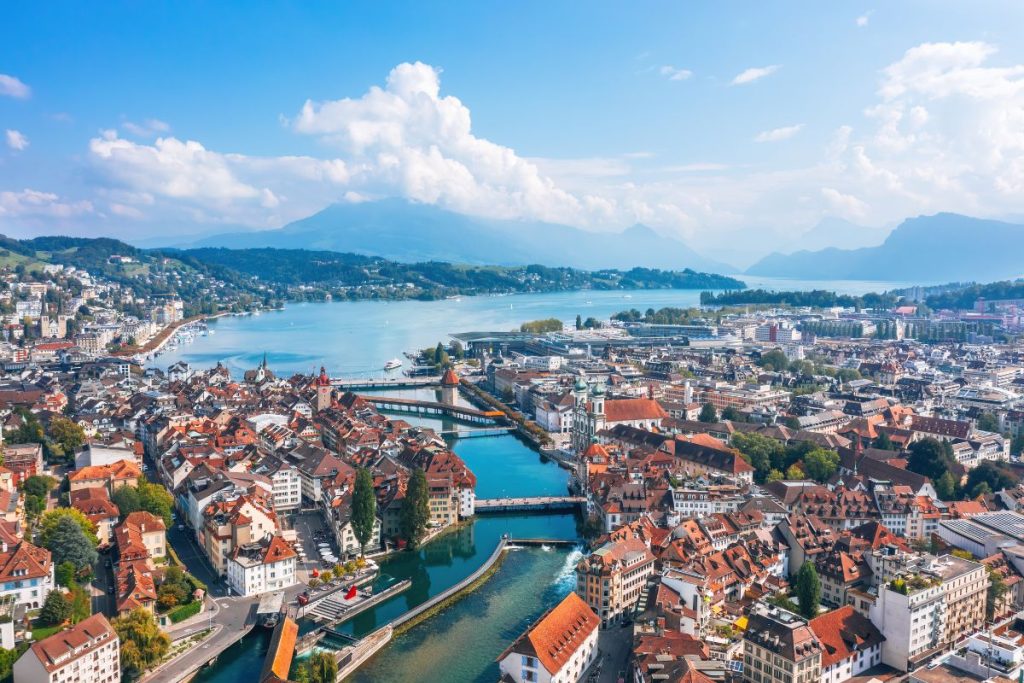
Lucerne is a modern dream with an ancient soul. Its eponymous lake takes the throne in the centre, along which boats ferry tourists from one end to the other. Spires and domes coronate the roofs of clock towers, homes and hotels that ring the periphery. Mountains snarl their heads from beyond the Musegg Wall’s 800-metre long fortifications. Legend has it, about 1,300 years ago, an angel holding a lamp appeared at the same spot every night. The first dwellers believed it to be a message from the heavens and built a chapel to honour the ‘City of Lights’. Its name is derived from the Latin term Lucerna (meaning, “an oil lamp”).
Sabine whips out a catalogue that documents the region’s development in blueprints. Hotels sprung up towards the end of the 19th century. “By then, Lucerne had become a Mecca of tourism,” she states. The region wasn’t easy for travellers to access. It’d take up to three weeks for those arriving on horse carriages from France and the U.K.
But with meticulous air and railway connectivity, it became the gateway to central Switzerland, enabling visitors to hop over to the next station in a matter of hours. A few hotels converted to private residences since their services were no longer necessary. This explains why there were more beds to sleep tourists before World War I than there are today.
As we walk past Bahnhof Luzern, the Chapel Bridge demands my attention. The landmark diagonally cuts across the Reuss river and connects the two neighbourhoods on either side, one bank flanked by waterfront restaurants and the other by couture labels and structures of government prominence. Over 200 metres in length, the covered wooden structure initially doubled as a defense fortification. By the 17th century the bridge was used to educate the largely illiterate population, at the time, through a series of 111 triangular paintings; they depicted historical and religious stills hung from the rafters. Of this, 86 were destroyed by a fire in 1993. Thankfully, the pictorial paintings of the Luzern’s other two medieval bridges fared better.
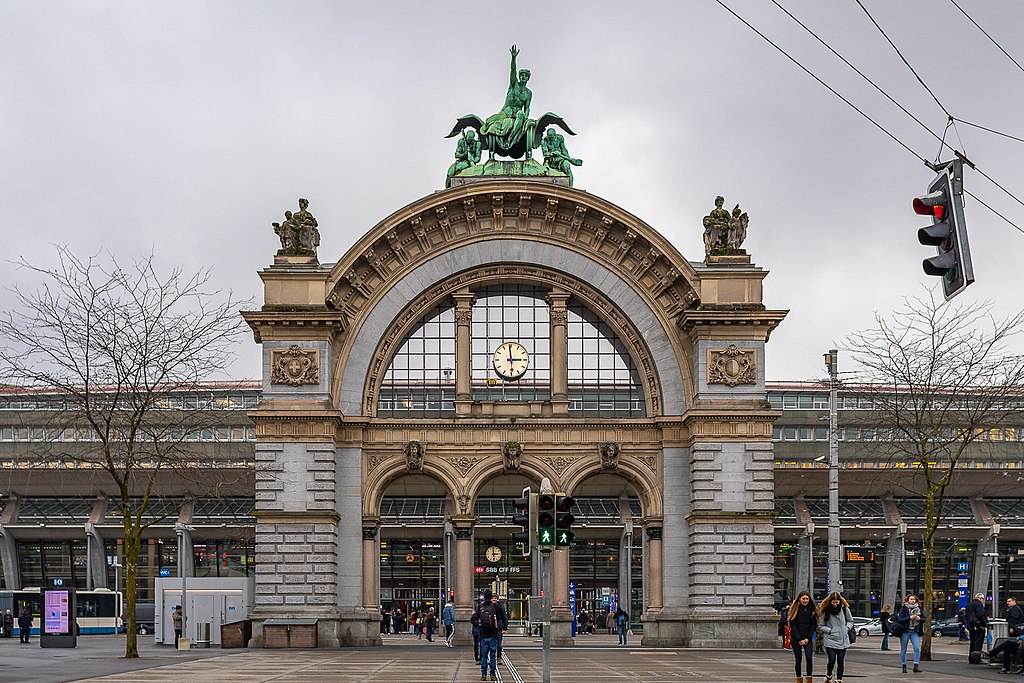
“Dance of Death,” a series of 67 paintings that line the Spreuer (or Müllen) Bridge, piques my interest. “Death does not discriminate and inevitably comes for us all,” Sabine decodes the unwritten message of the 17th-century craftsmanship, commissioned by the city’s council in a bid to encourage citizens to lead healthy lives. Inspiration for the living must be easy to come by in a town where art permeates every alley. Here, museums hang the works of world-renowned artists, including Cézanne, Picasso and Monet; the walls of the town squares are splashed with frescoes; and sculptures, such as the “Lion of Lucerne”—a mortally wounded lion impaled by a spear, symbolising the fallen Swiss guards who defended Paris’s Tuileries Palace during the French Revolution—showcase hallowed history.
***
The 1677-inaugurated Jesuit Church, modelled after the Church of the Gesù in Rome, is another notable edifice. Founded by the Jesuit congregation, it was the first of its kind in the country to be built in the baroque style. My eyes trace the lofty interiors whitewashed with baroque and rococo stucco art, scanning the high altar studded with gold before settling on a painting spanning the high ceiling: A work where two starkly different worlds collide with the help of creative liberty. It shows Francis Xavier—to whom the church is dedicated—in Luzern with locals, riding on a golden wagon drawn by an elephant, even though the animal is not found in the region. “The artist knew that the missionary strove to bring Catholic ideas to Japan, China and India (his body is buried in Goa),” Sabine elaborates.
As the afternoon progresses, we amble around the cobbled labyrinths of Old Town, past candy-coloured Vespas and diners hunkering down in cafés, chatting animatedly between swigs of beers. I study the conspicuous frescoes—many of which date back to the late 19th century—that sprawl across the facades of the town squares. Back in the day, these spaces doubled as stages for Jesuit preaching and marketplaces that traded in a variety of goods. Weinmarkt, or the Wine Market, houses the 1530-built pharmacy, Müllersche Apotheke.
The mural on its yellow wall portrays the act of treating ailments, where the phrase, “Amor Medicabi Lis Nvllis Herbis,” is etched in Latin. “There is no herb to cure love,” Sabine translates. I can’t help but be amused. Perhaps, the artist knew there is no better antidote than wine to nurse a broken heart.
***
For a breathtaking view of the city, we climb 105 steps that open to the top of Musegg Wall through one of its nine surviving towers. Creepers hug the 13th-century fortification that was erected following the Battle of Sempach; it is considered one of the longest, best-preserved defensive walls in Switzerland.
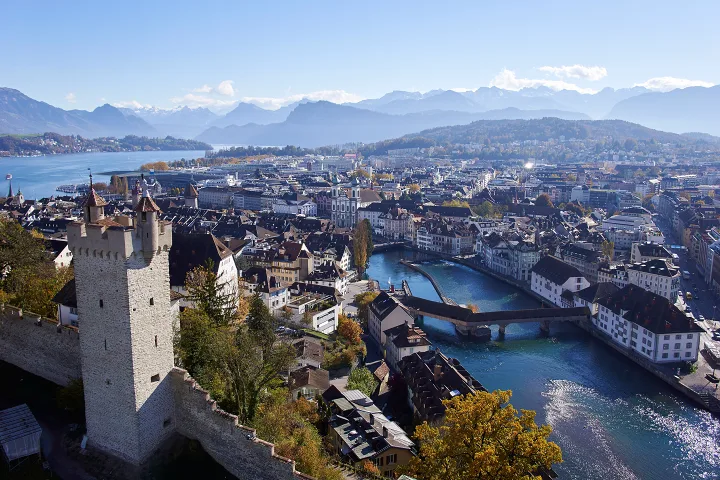
At the top, I ask Sabine if she could imagine living someplace else. “In bigger cities such as Zurich and Geneva, life is fast-paced. There is more money, but there is also more stress,” she justifies. “Lucerne strikes a balance.” I nod in agreement.
The sun begins to fade behind the horizon. I think back to Sabine’s tale of the angel who visited the city every night. Even celestial beings could not help but fall hard for Lucerne. We’re only human.
For latest travel news and updates, food and drink journeys, restaurant features, and more, like us on Facebook or follow us on Instagram. Read more on Travel and Food Network
Trending on TFN
The 23 Best Places To Go In 2023
Explore Utah’s Mighty 5® and What Lies in Between
Five Epic U.S. National Parks To Visit This Year
Pooja Naik is a Mumbai-based journalist with a penchant for food, art, and adventure. Her affinity for travel has often led her to many cultural crossroads, whereby she savoured butter tea with the resident monks at Thiksey Monastery in Ladakh and guzzled an indigenous produce of green ant gin at a local’s behest in Australia. Her work has appeared in National Geographic Traveller Ind





